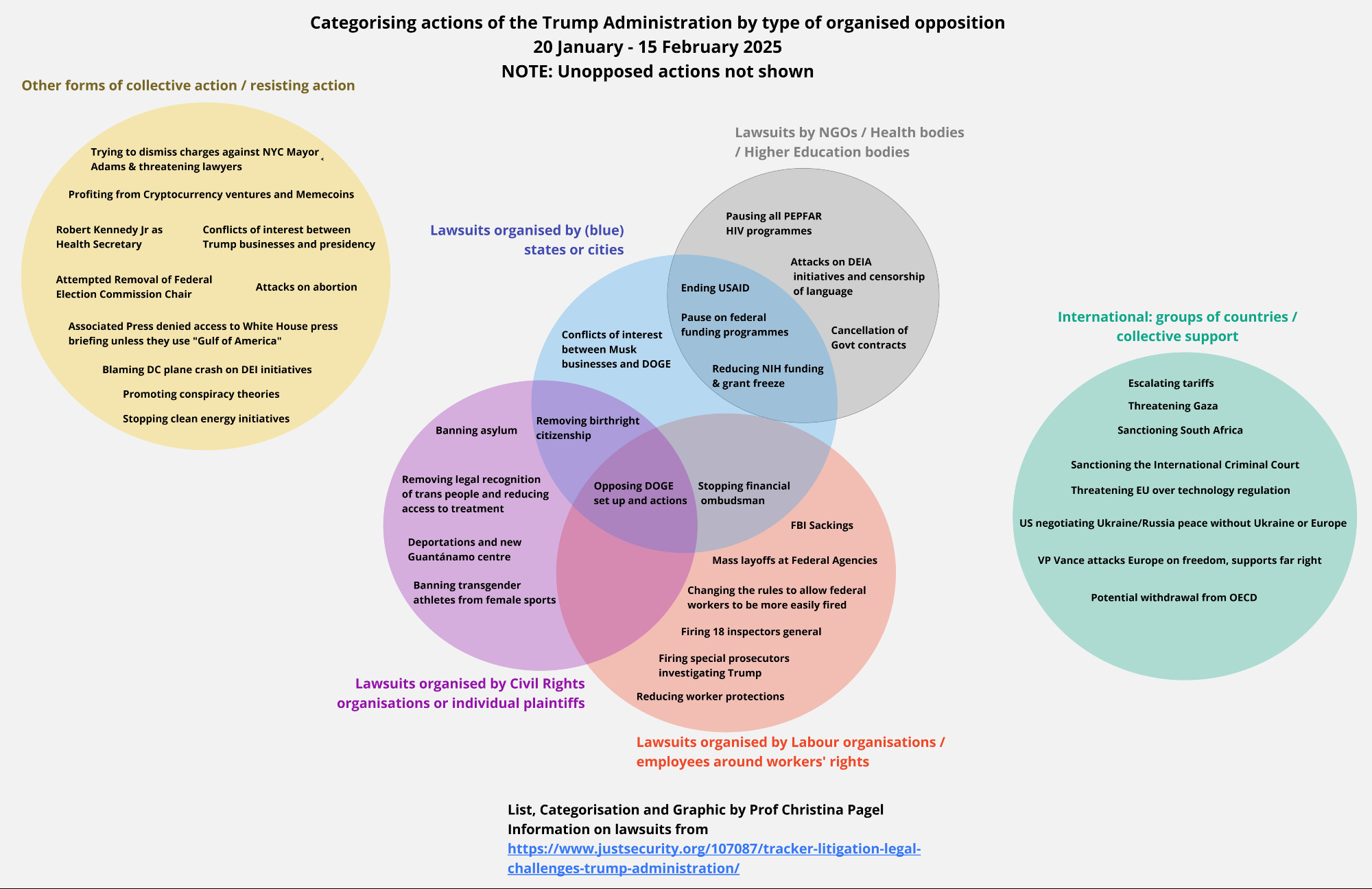There’s lots to do.
-
Start doing things that politicians care about. That means taking the advice of former Congressional staff members who know. And that means joining your local Indivisible chapter. Discussion in this thread. Briefly, don’t think you can do everything: those in blue states/districts will run a different strategy than those in red or swing states/districts. It’s all in the colorful 20 page Indivisible document, mostly in the first quarter of the document.
-
Leverage your social network. In other words, there’s plenty to do if you’re a lawyer. STEM has dragged its collective feet. Methinks a message of shared traditional conservative and liberal values could work, but who knows?
This bluesky thread organizes Trump actions by its opposition. It also has a spreadsheet of actions that went unopposed. Worth posting multiple times on this message board (but not spamming)
You need to break down the different sections of the electorate. 40% are for the GOP, and some of them should know better. 40% are for Democrats and democracy. 20% are unengaged and affected by the price of eggs. Worldwide there was a turn against incumbents and I say it was because of supply side inflation, which was beyond any politician’s control. Oh well.
Similarly, those reviewing the 2016 election numbers found them unexceptional, which means that Hillary wasn’t a particularly bad candidate, Biden wasn’t a particularly good one, and Kamala wasn’t too bad either. Granted it’s not a great insight to say that political victories occur at the margin, but it’s important to realize that, “How do we win elections? (A: at the margin)”, is a fundamentally different question than, “Why did people vote for Trump? (a question about the median Trump voter, as opposed to the median American voter)”.
Any explanation for the 2024 loss must account for the huge swing in Latino voting (majorities of Latinos still voted for Democrats, but by a much thinner margin), and the fact that swing states swung a lot less than non-swing states did (indicating that Democratic GOTV and ad spending were superior to GOP efforts). Those are median American voter facts. The academic/think tank analysis of them should be available by June of this year. Maybe there’s a paper out now.
